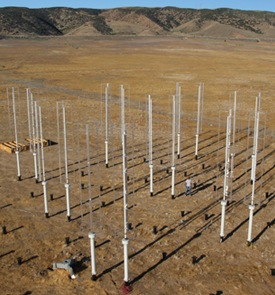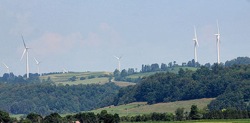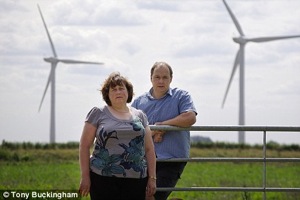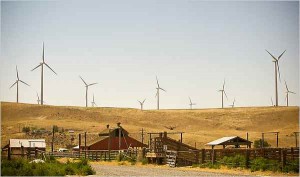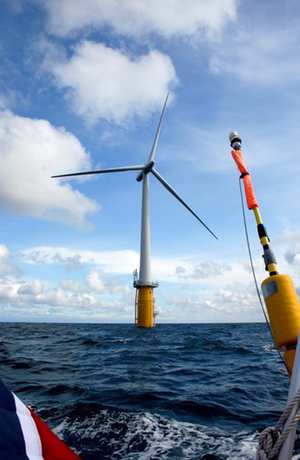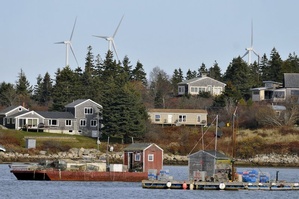UK court OKs amplitude modulation limits, wind industry scrambles to comply
Human impacts, News, Wind turbines 11 Comments »The UK wind industry is scrambling to respond to a High Court ruling that affirmed the legaltiy of conditions placed on the Den Brook wind farm near Devon, limiting ampltude modulation of wind turbine noise to a level that could be very hard to comply with. After years of pooh-poohing the reports of neighbors who said that the pulsing quality of the turbine noise made it especially hard to live with, including a much-criticized study a few years back that found nearly no AM at UK wind farms, Renewable UK (formerly the British Wind Energy Association) is fast-tracking a far-reaching study of AM, which they hope to complete in just seven months.
The new study, funded by Renewable UK (a trade organization of wind industry companies), aims to develop better models for predicting AM, including assessment of the effects of high turbulance and closely spaced turbines, as well as noise predictions both nearby and at a distance. In addition, they aim to develop a listening test that could inform a possible penalty-assessment approach to dealing with AM noise when it does occur; such an approach, common in many regulations, forces the overall noise level to be lower when AM is present.
After years of claimng there is no need to assess or regulate AM, it appears that the industry has now found itself sufferering the consequences of denying the problem. Instead of working to create regulations that take the issue seriously (whether or not it is common), the industry is now vulnerable to being out of compliance when AM does occur.
The recent ruling unfolded along just these lines. The wind developer claimed noise would be inaudible or at least not problematic, while local resident Mike Hulme was unconvinced and wanted to be sure that if AM did occur, there would be consequences for the wind farm. His acoustical consultant Mike Stigwood told the Noise Bulletin: “I devised an excess amplitude modulation condition based on my findings and measurements at other wind farms that was worded simply and made an exceedence a breach. It was a simple stand-alone condition.” In an earlier round of litigation on these conditions, the developers proposd a penalty approach to dealing with non-compliance (thus seemingly implying that AM could occur), but the Inspector who wrote the rules did not incorporate their proposal, because he felt the proposal lacked necessary detail to apply effectively.
While the High Court ruling denied the appeal’s goal of stopping the Den Brook wind farm from proceeding, it affirmed the validity of the AM condition and stressed that the wind farm must comply with the rules as written, which are very stingent: whenever sound levels are over 28dB, turbine noise (measured in very short time intervals) can’t vary by more than 3dB. To avoid penalizing random momentary fluctuations, the AM provision applies only when this pulsing of sound occurs more than five times in two minutes, and for at least six minutes in any hour.
While ruling that the condition as written was valid, the Court said that there was no provision in the ordinance that would allow any sort of penalty or other way of dealing with non-compliance with the AM limit, short of shutting down or changing operations so as to remove the pulsing sound. It’s likely that this High Court ruling will provide precedent and justification for the development of ordinances that do address Amplitude Modulation as a particular quality of wind turbine sound, and that future ordinances will be developed with a penalty scheme to minimize the negative effects of this pulsing quality of wind turbines, by requiring them to be quieter when AM is present; in practice, this is likely to mean that wind farms will need to be built a bit farther from homes, so that their noise is quieter all the time, leaving room for AM factor to be added without breaking the noise limits.
For more, see this article in The Environmentalist, a leading UK magazine, or read the High Court ruling here. Also fo note, the June 2011 edition of Noise Bulletin includes an in-depth article on the court case, along with a good summary of the Wind Turbine Noise 2011 conference, including a sidebar introducing the industry-funded AM research program; Noise Bulletin is not viewable online, but free sample issues and trial subscriptions are available on their website.


